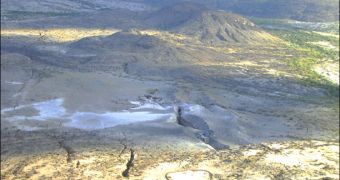The seed of a new ocean on Earth has been planted less than 6 years ago, experts say. The body of water will develop along the East African Rift, and is the direct consequence of a massive volcanic eruption that took place in Ethiopia in 2005.
In just a matter of days – a blink of an eye in geological terms – the event generated a 35-mile (56-kilometer) rift in the ground, right at the point of intersection between two tectonic plates.
The plates are the foundation of the African continent, geologists say, and they are apparently pulling away from each other. At the time of the eruption, some scientists proposed that a new ocean is about to emerge, but a heated debates sprung up in the scientific community on this issue.
The most recent discoveries, made by an international team of experts, appear to indicate that the groups making the claim were correct. Indeed, it would seem that the Ethiopian rift will be flooded soon, and turned into an ocean.
The reason why scientists are so certain that a new body of water is about to form is that the rift holds all the appearances of similar events at other locations. All of the other places are currently thousands of feet under water.
This “mega-dike intrusion” that developed in Ethiopia bears all the distinctive characteristics of a standard ocean floor. “This work is a breakthrough in our understanding of continental rifting leading to the creation of new ocean basins,” explains Ken Macdonald.
The expert holds an appointment as a professor emeritus in the Department of Earth Science at the University of California in Santa Barbara (UCSB). He was not a part of the new study, Daily Galaxy reports.
“The whole point of this study is to learn whether what is happening in Ethiopia is like what is happening at the bottom of the ocean where it's almost impossible for us to go,” adds Cindy Ebinger.
“We knew that if we could establish that, then Ethiopia would essentially be a unique and superb ocean-ridge laboratory for us,” the expert goes on to say.
“Because of the unprecedented cross-border collaboration behind this research, we now know that the answer is yes, it is analogous,” explains Ebinger, who is a professor of earth and environmental sciences at the University of Rochester, in the United Kingdom.
The Ethiopian rift grew to a width of 20 feet in a matter of days, not even weeks, scientists say. Something big must be happening underground if the ground split apart that fast, they add.

 14 DAY TRIAL //
14 DAY TRIAL //